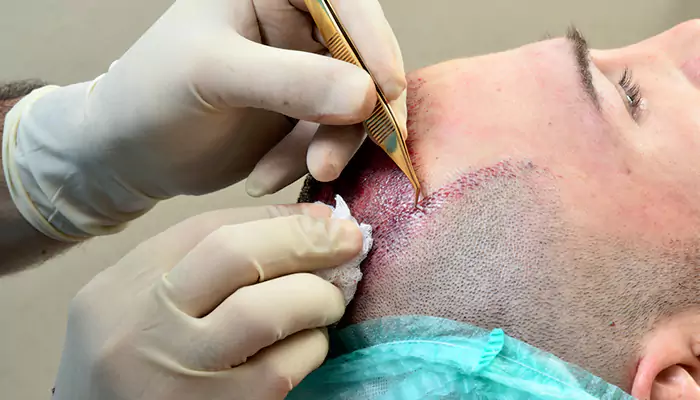DHI vs. Traditional Hair Transplants – Discover the Advantages of Direct Hair Implantation
Direct Hair Implantation (DHI) and traditional hair transplant techniques, such as Follicular Unit Transplantation , also called FUT, and Follicular Unit Extraction, also referred to as FUE, have revolutionized the way hair loss is treated.
- Ishani Karmakar
- 18 March, 2024
- 2 mins ago

DHI vs. Traditional Hair Transplants – Discover the Advantages of Direct Hair Implantation
Direct Hair Implantation (DHI) and traditional hair transplant techniques, such as Follicular Unit Transplantation , also called FUT, and Follicular Unit Extraction, also referred to as FUE, have revolutionized the way hair loss is treated.
Each method has its unique approach, advantages, and considerations. Let’s take a look at the specifics of DHI compared to traditional hair transplants, exploring the technological advancements, procedural differences, outcomes, and patient experiences associated with these ground-breaking procedures.
Understanding the Basics
Traditional Hair Transplants: Traditional methods, including FUT and FUE, involve the removal of hair follicles from a donor area (typically the back of the head) and implanting them into the recipient area. FUT involves extracting a strip of skin with hair follicles, which are then segregated into individual grafts. FUE, on the other hand, involves the extraction of individual hair follicles directly from the scalp.
Direct Hair Implantation (DHI): DHI is a refinement of the FUE technique, where a specialized tool is used for both extraction and implantation of hair follicles. This allows for direct transplantation without the need to create pre-made slits in the recipient area, potentially offering more precise placement and natural-looking results.
Technological Advancements and Procedural Differences
DHI utilizes the Choi Pen, a precise instrument that enables the surgeon to control the depth, direction, and angle of each implanted follicle. This level of precision is difficult to achieve with traditional methods. The Choi Pen reduces the time follicles spend outside the body, which can enhance their survival rate and promote better growth.
In contrast, traditional methods, particularly FUT, involve more invasive steps, including the surgical removal of a scalp strip, which results in a linear scar. FUE, while less invasive than FUT, still requires making numerous tiny incisions in the recipient area to place the extracted follicles, which can extend the healing time and affect the density of the implantation.
Efficacy and Outcomes
Studies have shown that DHI can achieve a higher follicle survival rate compared to traditional methods. A research article highlighted that DHI could provide a follicle survival rate of up to 90% or higher, compared to 85% for FUE and lower for FUT. This is largely attributed to the reduced handling of follicles and shorter time outside the body.
Moreover, DHI allows for the implantation of hair follicles in areas with existing hair without shaving the recipient area, a significant advantage for many patients seeking a less noticeable post-operative appearance.
Recovery and Patient Experience

The recovery process is another critical aspect where DHI offers advantages. Due to its minimally invasive nature, patients typically experience less discomfort and a quicker recovery period with DHI. The absence of incisions or sutures in the recipient area means there is minimal scarring, and patients can return to their normal activities sooner than with FUT.
Cost Considerations
One of the main considerations for patients is the cost of hair transplant procedures. DHI is generally more expensive than traditional FUE and significantly more than FUT. This price difference is due to the advanced technology used, the skill required to perform DHI, and the longer duration of the procedure.
Direct Hair Implantation represents a significant advancement in the field of hair restoration. Its precision, efficiency, and ability to deliver natural-looking results make it a compelling option for many patients. While traditional methods like FUT and FUE continue to be effective for certain cases, DHI offers distinct advantages that cater to the evolving expectations of patients seeking the best possible outcomes.







